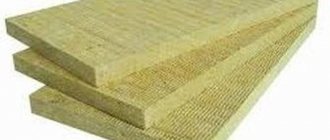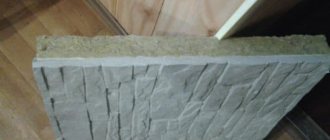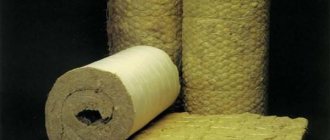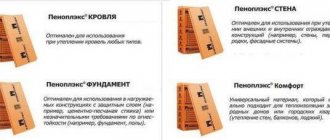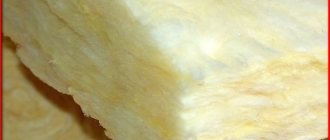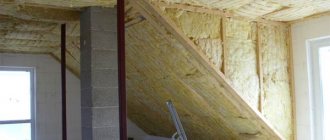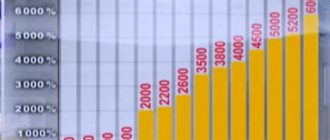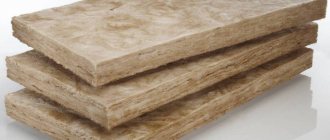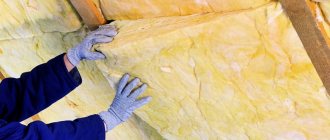What types of mineral wool are there?
Mineral wool is usually classified according to the material from which it is made. This leads to the conclusion that mineral wool, made from different starting materials, differs in structure - fibers, and, accordingly, in the type of cutting. So there are the following types of mineral wool:
- Glass mineral wool. Consists of glass melts.
- Stone mineral wool. It is most often made from various rock melts.
- Slag mineral wool. The starting material is blast furnace slag.
In fact, you should pay attention to the fact that sometimes mineral wool can be harmful. This is due to the fact that it contains dust and phenol-formaldehyde resins.
Therefore, it is necessary to treat this material selectively, although mineral wool cannot be classified as a human carcinogen.
Types of mineral wool
There are varieties of mineral wool: glass and basalt.
The latter is made from rock - gabbro-basalt. During production, carbonates are added to it, which allows you to regulate its acidity. Basalt wool
A factor such as acidity is of great importance for mineral wool. The more acidic the cotton wool is, the less sensitive it is to water.
The type of cotton wool in which the acidity is higher is considered more durable. Synthetic, bituminous or composite clays are added to give shape. Glass wool does not require much explanation; its name speaks for itself.
This is a mineral composition, for the production of which the same ingredients are used as for glass (this can be broken glass).
The two types of wool differ in their properties. Glass wool is usually 15 microns thicker (from 3 microns), but basalt wool is several times longer.
The conclusion suggests itself: glass wool is a more durable material that can withstand more aggressive environmental factors than basalt. Also, glass wool does not burn.
Insulating a roof with mineral wool is difficult when working on roof slopes with a rafter structure. In such cases, it is better to use thick cotton wool. To prevent moisture from accumulating under the roof, you need to use cellulose wool.
Safety precautions when working with mineral wool
You should know that there are special safety precautions when working with this material, which prevents its negative impact on human health: basalt mineral wool emits dust, which is extremely dangerous for people working with it.
When cutting and further installing this insulation, the following rules should be observed:
- use protective clothing made of thick fabric and construction gloves;
- When laying slabs, wear special glasses over your eyes and a protective mask over your face;
- After work, be sure to wash your hands, change clothes or clean them thoroughly.
Good ventilation in the workplace helps to avoid the negative impact of dust from mineral wool on human health.
Since the technical characteristics of mineral wool from different manufacturers can vary significantly, there are several practical tips that make it possible to obtain high-quality insulation for any initial mineral wool data.
These include:
- When insulating a flat roof, mineral wool should be laid in two layers.
- To increase the degree of sound insulation, it is recommended to use granulated mineral wool.
- The most practical are slabs with ventilation grooves.
- When constructing a one-story building, a three-layer wall may not have a ventilation gap.
- Used attics are most often insulated with two layers of mineral wool.
- Precise cutting of mineral wool slabs guarantees the absence of cracks and the likelihood of “cold bridges” occurring.
The presence of broken lines on the insulation boards facilitates the process of measuring and subsequent cutting.
www.allremont59.ru
How to work with mineral wool
To protect against small particles, it is better to work with mineral wool wearing gloves and a respirator.
In the production of glass wool, the same material is used as for glass production, as well as waste from the glass industry. If we take into account that the raw materials for the production of glass wool are limestone, sand, borax, soda and dolomite, then the content of cullet in the structure of the material reaches up to 80%.
When working with glass wool, fragility of the fibers is formed in the form of small sharp particles that fall on the human body, respiratory organs and eyes. Therefore, when working with glass wool, it is imperative to use protective equipment such as a respirator, safety glasses, thick gloves, and clothing that covers all parts of the body. If, for some reason, you fail to adhere to the following rules:
- If dust gets onto an open area of the body, there is no need to itch. Because by doing so you will drive small particles further into the body.
- Using caution, you need to shake off the glass wool. Moreover, if you are indoors, you need to do this over a dry bath, and if you are outdoors, shake yourself in the direction of the wind.
- Take a cool shower, but never hot, without using a washcloth, soap or various sponges.
- After a shower, do not dry yourself with a towel; wait until you dry.
- If glass wool gets into your eyes, try to rinse them with cold water. If nothing helps and there is pain in the eyes, consult a doctor. If your eye condition is critical, you should immediately call an ambulance.
- The same applies to the respiratory tract. If after working with glass wool you have a persistent cough, difficulty breathing or other problems, go to the doctor.
- It is best to immediately throw away the clothes you worked in. No matter how much you shake it out and wash it, glass wool particles will still remain in it.
Knife for cutting mineral wool
Slag is produced from blast furnace slag waste during iron smelting. If you compare slag wool with glass wool, both contain brittle fibers with the only difference being that in glass wool they have the nature of glass, and in slag wool they have the nature of slag. Which ultimately makes the latter no less harmful than the former.
The same applies to stone wool, or as it is also called basalt wool, because it is made by melting basalt when heated to 1500 º C. Here the role of sharp and small fibers falls on frozen basalt threads. Among other things, slag and stone wool contain phenol-formaldehyde resins, which are also very harmful to health. Therefore, all the precautions inherent in working with glass wool apply to both stone and slag wool.
All types of mineral wool are used to insulate the facades of buildings, but in no case should this material be used to insulate walls and ceilings indoors.
a) cutting mineral wool is most convenient with a sharp knife with a long blade; b) it is advisable to work with mineral wool together, because this makes it easier to handle it carefully; c) cover the cotton wool attached to the wall with a protective polyethylene film, and only then attach the lining, MDF panels or something else.
Features of installing mineral wool insulation
The manufacturer produces the material in the form of rolls or slabs. Mineral wool insulation is used for walls, roofing or interior partitions. In the latter case, mainly to achieve good soundproofing parameters of the structure. During installation, the requirements for insulation are taken into account, which you need to know before purchasing:
- installation in a sloping roof involves the use of wool with a density of at least 30-40 kg/cu. m, otherwise the material will simply sag over time. Recommended thickness - 15 cm;
- the arrangement of partitions should be carried out using mineral wool with a density of 50 kg/cubic. m. Increased density is needed to ensure high-quality noise insulation;
- Load-bearing walls are best insulated from the outside, because this will bring the dew point, where condensation will form, to the outside of the wall. The density of the material must be at least 80 kg / cubic meter. m, and thickness - 10 cm.
Modern mineral wool is a high-quality insulation material that has been tested for decades. Current technologies have made this material completely safe for installation and operation, and its technical characteristics, combined with cost, leave its closest competitors behind.
1poteply.ru
Disc knives for mineral wool
Intensive use of the machine and cutting tools automatically leads to wear. Processing glass wool, mineral wool and other abrasive materials has a particularly strong impact on those parts of the tool that come into contact with these materials.
A common problem when cutting mineral wool and glass wool is wear of the blade under the carbide tooth.
A problem as old as time...
One of the well-known problems when processing glass and mineral wool is the rapid wear of tools, especially cutting tools. This consumable requires regular replacement. For this reason, maintenance costs are high and production interruptions occur frequently. Constant friction against mineral wool will quickly take its toll on the main saw blade. This abrasion invariably leads to loss of quality.
In the traditional approach, cutting inserts are placed on the main disk and the area under the insert is subjected to abrasion. Abrasion causes destruction of the main disk. Because of this destruction, the cutting plates very quickly become unusable and break. Even if the plates are not damaged, they cannot be used in the future
Disadvantages of the traditional approach
- Rapid wear of the saw blade body
- Rapid breakage of carbide teeth
- Regular production shutdown
- Significant maintenance costs
... modern approach
The modern approach to brazing a carbide tooth eliminates all the disadvantages of the traditional method. This technological solution resulted from negotiations with suppliers and manufacturers and was the result of many years of development.
New soldering method
Thanks to the combination of a 2.5-fold expansion of the contact surface and a new carbide tooth overlay method, the wear of the saw blade body is significantly reduced. Tests have shown that the saw blade body and carbide tooth last much longer thanks to the new method.
This new technology has been developed specifically for the processing of insulating materials with saw blades, both for low and high density materials. For high density materials, milled saw blades are recommended, while for low density materials it is better to use solid edge saw blades. The new brazing method can be applied to discs of various diameters.
Benefits of the new technology
- Consistent and long-lasting cutting quality
- Longer blade life
- Carbide tooth lasts longer
- Saw blades require replacement less often, which means less downtime
- Maintenance costs are reduced
Our company offers a large selection of saw blades and circular knives designed specifically for cutting mineral wool, glass wool and other insulating materials.
All our discs can be supplied in any diameter and size up to 1100 mm. at the request of the customer. All saw blades and saws are equipped with carbide teeth and have hardened blades. We produce all types of discs with or without cooling slots.
Cutting insulating materials is a complex job and requires the highest quality saws and blades. We offer circular knives and saw blades of the best quality and are constantly working to improve them. We strive to make our blades as durable as possible and work to reduce the amount of dust generated when cutting with our blades.
Our company began work in a new direction, namely, cutting tools for sawing mineral wool based on basalt fiber and glass wool.
Samples of circular saws have been tested at various enterprises and have proven themselves very well.
How to cut mineral wool:
Cutting mineral wool can be done either independently at home or using various equipment. Equipment for cutting mineral wool boards can be different. The question is one of scale. The mineral wool cutting machine is suitable for serious and large scale applications - for enterprises, manufacturers, etc. But a knife for cutting mineral wool will become an indispensable assistant in cutting insulating materials at home.
It is important that cutting mineral wool does not damage the fibres, so equipment must be selected carefully. The cut must be smooth
At home, cutting rolls of mineral wool (the so-called “50s”) will be convenient using a cutting knife, but for larger ones (“100s”) a special hacksaw for insulation will be convenient. At the beginning, its price may seem unreasonably high, but it is worth it. It is important that the work is done properly. Circular cutting of mineral wool can be convenient. A mineral wool cutting machine can easily cope with such a task.
How to cut mineral wool?
It is advisable to cut stone wool insulation with a special knife with a serrated blade or a hacksaw. The tool used for these purposes must be well sharpened.
This is necessary to ensure that there are as few torn insulation fibers as possible. Many manufacturers of thermal insulation materials offer customers special cutting tools. These are knives whose length is approximately 300 millimeters, as well as saws with straight teeth.
It is important to note that the thermal insulation material must cover the insulated space very tightly. Therefore, it is necessary to leave allowances before cutting.
External wall insulation technology
Insulating the façade with cotton wool is done using glue and special dowels with a large head. The material is supplied in the form of rolls or slabs, which are cut into pieces of the required size. You will also need a metal profile or wooden blocks between which the insulation will be fixed. You can cut the material with an ordinary sharpened knife. However, if the density is high enough (80-100 kg/cubic m), then you will have to cut it using a hacksaw. Insulation of the facade is carried out in the following order:
- a vapor barrier film is attached to the wall; it must release moisture under the mineral wool slabs and prevent cold air from entering the house;
- Then wooden blocks or a metal profile are attached to the wall in a vertical position. Their width should correspond to the thickness of the insulation. The interval between the posts should be such that the mineral wool is inserted with little effort;
- The insulation is fastened with glue and special dowels if the wall is stone, or with nails (screws) with large washers if the surface is wooden. For 1 sq. m you need 5-6 pieces;
- It is recommended to lay a windproof membrane on the fixed basalt wool, the joints of which are taped with adhesive tape;
- To ensure ventilation under the subsequent decorative coating, it is advisable to make a counter-lattice over the slabs from wooden blocks or a metal profile 10-15 mm high.
This technology is suitable when facade insulation under siding is required. However, in some cases, for example, in multi-story buildings, it is necessary to secure the insulation more firmly. In this case, it is additionally fixed to the surface with glue, and reinforcement is carried out at the same time. This operation strengthens the structure and dampens the thermal expansion of the material, which can contribute to the formation of cracks and increase thermal conductivity.
Reinforcement is made on the already installed insulation using special glue and mesh that is resistant to alkali. First, glue is applied on which the mesh is laid, then it is covered with another layer of adhesive. The final decorative finishing can be done using facade paint and decorative plaster.
Necessary information for working with mineral wool
The specificity of the installation of mineral wool, its transportation and storage is to provide the conditions necessary to preserve its qualities for the longest possible time. Typically, recommendations are given by manufacturers for a specific brand and type of material, however, there are a number of simple universal rules that must be followed when working specifically with mineral wool.
Basalt mineral wool: transport and store correctly
Transportation with subsequent storage has its own characteristics, since mineral wool for insulation can quickly absorb moisture from the air. Therefore, transporting it in closed vehicles with subsequent storage in dry rooms is a prerequisite to prevent loss of the most important qualities.
- Mats should be transported and stored compressed and in packages - this makes it possible to reduce the occupied volume.
- The slabs should be laid in stacks less than 2 m high; roll packages and mats should be installed in a vertical position.
- It is prohibited to walk on laid out and unpackaged mineral wool, as it may be damaged.
Cutting mineral wool
Today you can buy mineral wool both in rolls and in the form of slabs and mats. To adjust it to the required size, you should use a sharp long knife or hacksaw, leaving allowances along the edges (in mats 1-2 cm, in slabs 0.5 cm). Allowances are necessary to completely fill the cut piece of mineral wool into the insulated space.
It is easier to cut mineral wool in rolls before unrolling it, and it is better to cut the slabs individually.
Amount of insulation
Mineral wool is packaged by rolling mats of the same size into rolls, while the number of slabs in a pack can be different depending on their thickness. On average, a pack has a volume of 0.3-0.4 m 3, its weight is 12-70 kg.
To calculate the number of packs of such insulation, you can use catalogs provided by manufacturers on the Internet. There are tables for the most accurate calculation of the required material (both in the form of slabs and in the form of mats of various sizes).
What will we cut with?
This can be done with different devices, depending on the thickness of the mineral wool.
Thin materials (no more than 50 mm):
Denser and thicker materials:
- special knives about 300 mm long. They are often offered by manufacturers of insulating materials. Such a tool has teeth of different sizes for cutting mineral wool of different thicknesses and densities;
- saws with straight teeth;
- hacksaw for metal;
- cutting machines. Used when cutting elements of complex shapes. However, for independent construction of your own house, that is, for one-time use, it is not advisable to purchase such expensive equipment - you will have to adapt to the capabilities of other tools.
Cutting and rewinding film rolls
- Longitudinal cutting and rewinding of rolls of thermal transfer, self-adhesive, reflective film - from 15 rubles per 1 kilogram
- Cutting and rewinding BOPP film rolls - from 12 rubles per 1 kg.
- Cutting and rewinding of rolls of PET, PVC, PVC and polyethylene films - from 15 rubles per 1 kg.
Head of production Vilkov Denis Viktorovich – 8-916-314-73-33
Engineer of the roll cutting department Eldar Amirbekov – 8-965-205-06-74
ORDER FILM CUTTING
TH "CHEYAL" provides cutting services for rolled films for any industry. In this area, we have accumulated extensive practical experience and knowledge, which allows us to select solutions for high-quality results when working with any film material, regardless of its thickness, stretch coefficient, statics and other factors. The ideal result is achieved thanks to the correct cutting mode: speed, tension and choice of knife type.
What kind of film do we cut:
- For packaging flowers. We cut glue-free PET film, both transparent and colored, of various thicknesses and widths. Non-woven materials for original designer bouquets.
- For meat processing complexes and sausage producers.
- For the construction industry. We cut insulating materials and other films.
- Own PET and BOPP film for lamination.
Film rolls are wound and cut to suit the customer's production capacity; the core diameter, length and width of the finished rolls are determined at your choice.
The order execution time depends on the quantity and characteristics of the required roles.
Winding is done on 1 and 3 inch bushings.
Lamination film in standard winding is always available in our warehouses.
We cut soft-touch laminating film for 1 core into standard sizes, which can be viewed in the catalog soft-touch laminating film for 1-inch sleeve
For industrial laminators, thin film (20-30 microns) is wound, as a rule, 3000 meters long. Thick types of PET films - depending on your wishes.
BOPP and PET film in rolls on a 1-inch core (for non-industrial office roll laminators) is wound in the following sizes:
| Lamination film thickness in microns | Winding length |
| 20, 22, 23, 24, 25, 27, 30 | 300 |
| 32 | 200 |
| 75 | 100 |
| 125 | 75 |
| 250 | 50 |
These standard sizes (correspondence between film thickness and footage per roll) are offered as maximum for non-industrial roll laminators. A film with a larger winding (than indicated in the table) will have a roll diameter larger than the technical parameters of the laminator. Film of larger winding is not installed on the laminator (the diameter of the roll will be greater than the distance between the guide on which the roll is attached and the laminated surface provided by the manufacturers of roll laminators).
Whatever products you produce, we will be able to offer you lamination film of decent quality. We value the time, money and nerves of our clients, as well as our own resources, therefore we focus on mutually beneficial cooperation and always deliver on our promises.
Operational features of basalt wool
Basalt and other rocks of its group are used for production. Thin fibers are taken, into the melt of which limestone (10-15%) or charge is added. Additives increase the resistance of the material to excessively high temperatures and aggressive environments. The result is an insulation material with fairly high performance characteristics:
- thermal insulation and hydrophobization. The first parameter is from 0.042 to 0.048 W/mK. Other well-known insulation materials (for example, polystyrene foam, polyurethane foam) have approximately the same characteristics. Mineral wool is not able to accumulate moisture (hygroscopicity is less than 1%), which makes its weight unchanged. A distinctive feature is vapor permeability, which guarantees insulation and at the same time intense moisture exchange between the external environment and the walls of the building;
- density, strength. The insulation has sufficient density (from 30 to 100 kg/cubic m), which guarantees high thermal insulation properties with optimal strength. The rigidity of the material is ensured by the direction of the fibers; they are located in horizontal and vertical directions;
- soundproofing. Good noise protection characteristics are achieved due to the porous structure of the wool;
- resistance to aggressive environments. Vata is “indifferent” to alkali and acids; does not rot, is not affected by fungus. Rodents also avoid this insulation;
- fire resistance. Basalt wool can withstand heating up to +700°C. This protects the structure from complete destruction in a fire and gives time for residents to evacuate;
- health safety. In production, resins containing harmful substances (formaldehyde, phenol) are used. However, adherence to the technology requires their introduction into the insulation composition in a chemically bound state. The substances become completely neutral in relation to the environment and do not pose a danger to humans.
